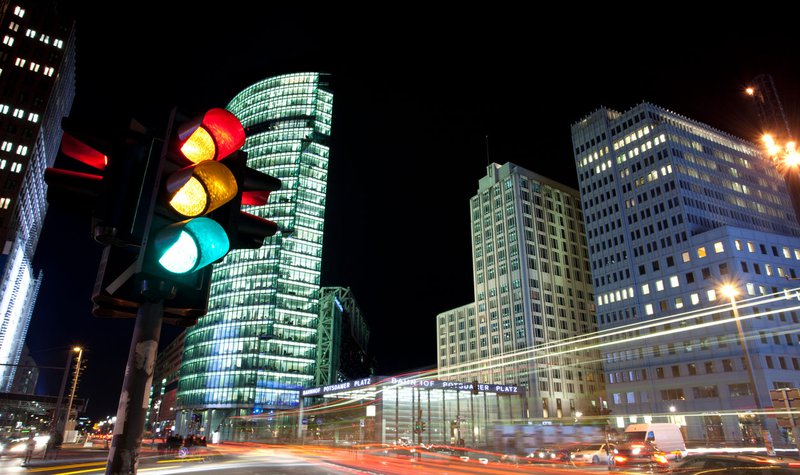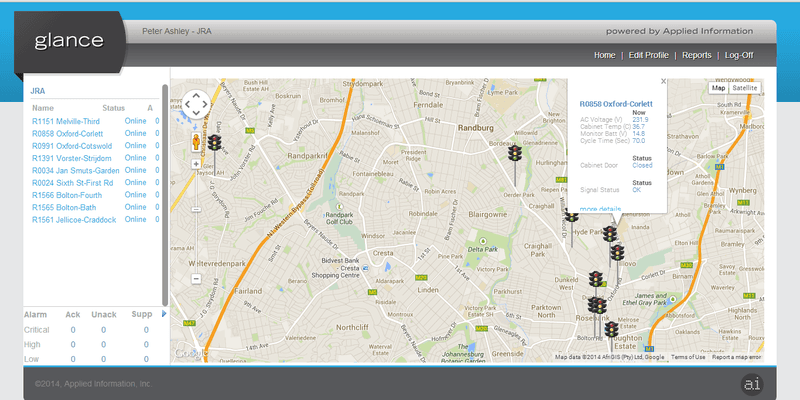
The rise of Tesla has ignited hopes of a future where autonomous vehicles would maximize efficiency and minimize accidents, while enabling drivers and passengers to read a book, work or watch a movie without paying attention to the road. While these aspirations may still be years away, the same underlying technology is already helping to alleviate traffic in other ways.
Smart traffic signals continuously monitor, learn, predict and respond to traffic demands and conditions with optimal signal timing given current conditions. Using these technologies, several pilot projects have reduced travel times by over 25 percent by stopping vehicles 30 percent fewer times, cutting both travel times and greenhouse gas emissions.
Let’s take a closer look at the Smart Stop Lights Act of 2019 and how it could reshape traffic in America.
[bctt tweet=”Autonomous vehicles may get a lot of press, but the same technology could soon play an important role in traffic signals.” username=”AppInfoInc”]
What is the Smart Stop Lights Act?
The Smart Stop Lights Act of 2019, H.R. 3261 (116th), would direct the Secretary of Transportation to establish a Smart Technology Traffic Signal Grant Program for state, local or tribal government entities in order to reduce traffic congestion, improve safety and effectiveness on roadways, reduce fuel costs for drivers and reduce air pollution.
“There are real economic and environmental consequences to traffic congestion,” said Rep. Tony Cárdenas (D-CA) in a joint press release from the sponsors announcing the bill. “Reducing city traffic is smart policy and smart economics. Upgrading our traffic signals and implementing smart technologies is a real solution to a growing problem.”
The grant would cover two technologies:
- Adaptive signal control technology
- Real-time data measurement technology
Rep. Cárdenas introduced the bill on June 13, 2019 with Rep. Adriano Espaillat (D-NY) and Rep. David Schweikert (R-AZ). Currently, the bill remains in the first stage of the legislative process. If the bill is approved by the Committee on Transportation and Infrastructure, it will be sent on to the House or Senate, where it must be approved before being signed by the President.
[content_upgrade cu_id=”3188″]Get the bonus content: Checklist of Smart Traffic Light Resources[content_upgrade_button]Click Here[/content_upgrade_button][/content_upgrade]
The joint press release points to existing data from the City of Los Angeles, which adjusted signal timing on nearly 4,600 signalized intersections. These efforts reduced travel time by 12 percent and increased speeds by 16 percent.
“Modernizing our infrastructure system is vital to helping us become a more efficient society,” said Rep. Schweikert. “By crowdsourcing information and using smart technology, this legislation will use data specific to our own community’s traffic to help improve a routine in all of our daily lives. I’m pleased to see us using real-time technology to gather this information.”
This bill follows earlier versions, including H.R. 6102 in September 2016 and H.R. 2778 in June 2017. According to Skopos Labs, the bill has just a one percent chance of being enacted in its current form, but it could form the basis for future bills pushing for the same grant programs or related programs that could promote smart traffic signals.
Why Smart Traffic Signals Matter
Modern three-signal traffic lights were created in the 1920s by William Potts, a Detroit-based police officer. Most of these traffic signals use preset timers, but a few leverage cameras, radar systems or sensors under the road to detect cars and trigger lights to change outside of a preset timing cycle. But without software, they remain rudimentary solutions.
Smart traffic signals continuously monitor, learn, predict and respond to traffic demands and conditions with optimal signal timing for prevailing conditions. In addition to reducing travel times, these technologies could better serve pedestrians and cyclists, adapt to inclement weather and provide traffic engineers with a higher-level view of traffic conditions.
For example, the City of Atlanta and the Georgia Institute of Technology launched the North Avenue Smart Corridor in mid-September 2017 under the Renew Atlanta program. The program involved the use of adaptive signal timing with artificial intelligence, thermal imaging and video cameras to respond to pedestrians and cyclists in real-time.
These technologies enable a number of different capabilities. For instance, cyclists don’t have to get off their bikes to press a button and change the traffic signal — even if there’s no vehicle next to them. Traffic signals can also extend green lights if there’s a large traffic queue in one direction but not the other, to help keep traffic moving quickly.
[content_upgrade cu_id=”3188″]Get the bonus content: Checklist of Smart Traffic Light Resources[content_upgrade_button]Click Here[/content_upgrade_button][/content_upgrade]
Despite technological advancements, only three percent of all traffic lights in the United States are considered “smart” according to Aleksandar Stevanovic, Director of the Laboratory for Adaptive Traffic Operations & Management at Florida Atlantic University, who was quoted in a Time article discussing smart traffic signal technology.

Bridging the Gap with Applied Information
The biggest hurdle to adopting smart traffic controllers is allocating budget. According to Truth in Accounting, more than 80 percent of the country’s 75 most populous cities don’t have enough money to pay the bills and balance the budget. Unfunded debt from these cities amounted to nearly $330 billion, which leaves little wiggle room for investing in new technology.
Smart traffic signals may provide a long-term return on investment, but it’s hard to justify the higher price tag when there are other pressing and underfunded projects over the short term. Smart traffic signals are typically a lot more expensive than their basic counterparts, while there are few government programs incentivizing or subsidizing their use.
Applied Information aims to help cities bridge the gap by providing equipment to upgrade existing traffic controllers to “smart” traffic controllers instead of replacing them outright. By introducing cellular connectivity, the company connects traffic controllers to its Glance Central System, which provides smart city insights at a fraction of the cost of competitors.
In addition to smart traffic signals, Applied Information provides a wide range of smart city solutions, such as school zone flashing beacons, priority and preemption systems, parking solutions, mobile devices and ITS systems, which are all tied to the same Glance Central System, providing traffic engineers with visibility into real-time conditions.
The Bottom Line
Smart traffic signals could have a significant impact on traffic congestion by reducing travel times and greenhouse gas emissions. The Smart Stop Lights Act of 2019 aims to provide grants to help cities fund the purchase and installation of these traffic signals, but without these grants in place, many cities are unable to justify the high price tag.
Applied Information provides a bridge for cities to afford these solutions without waiting for legislators to approve a grant system. By leveraging existing traffic infrastructure, the company eliminates the need to invest in an entirely new infrastructure. The reliance on cellular connectivity rather than fiber also means that cities don’t have to invest in expensive connectivity upgrades.

Interesting post, Thanks for sharing.
I think the stories of accidents will begin to emerge especially with bikes and pedestrians and random patterns with turn arrows.